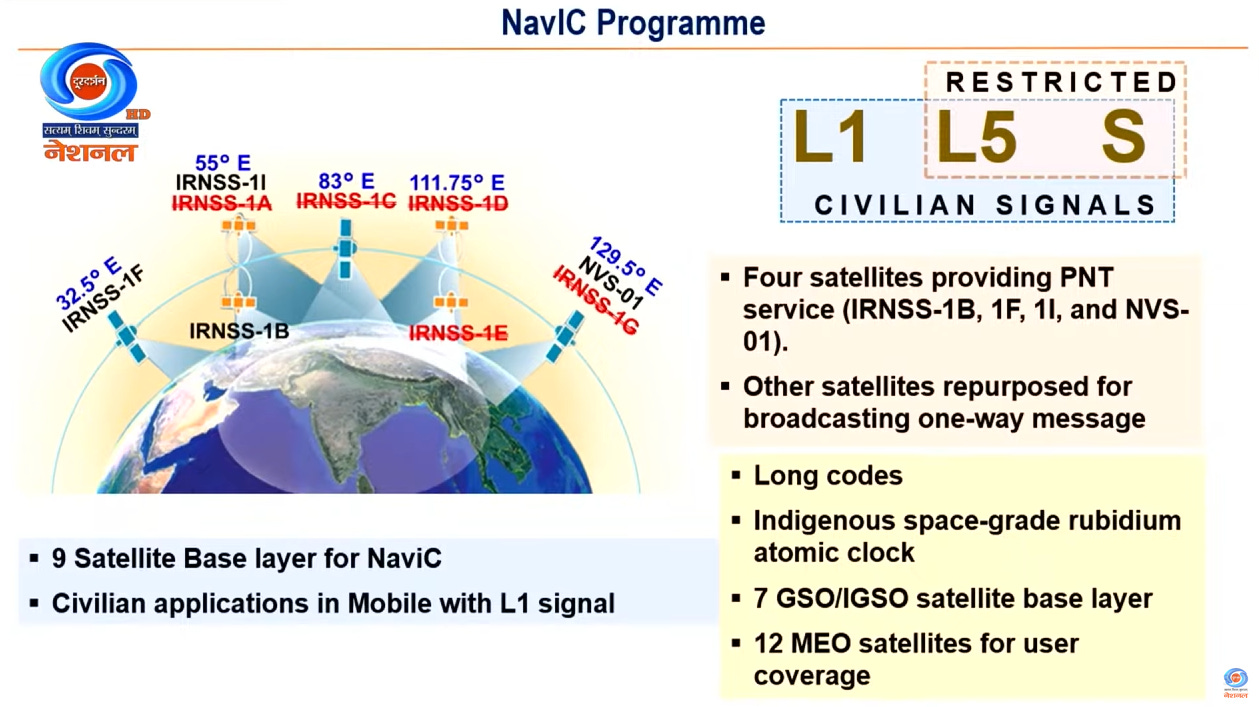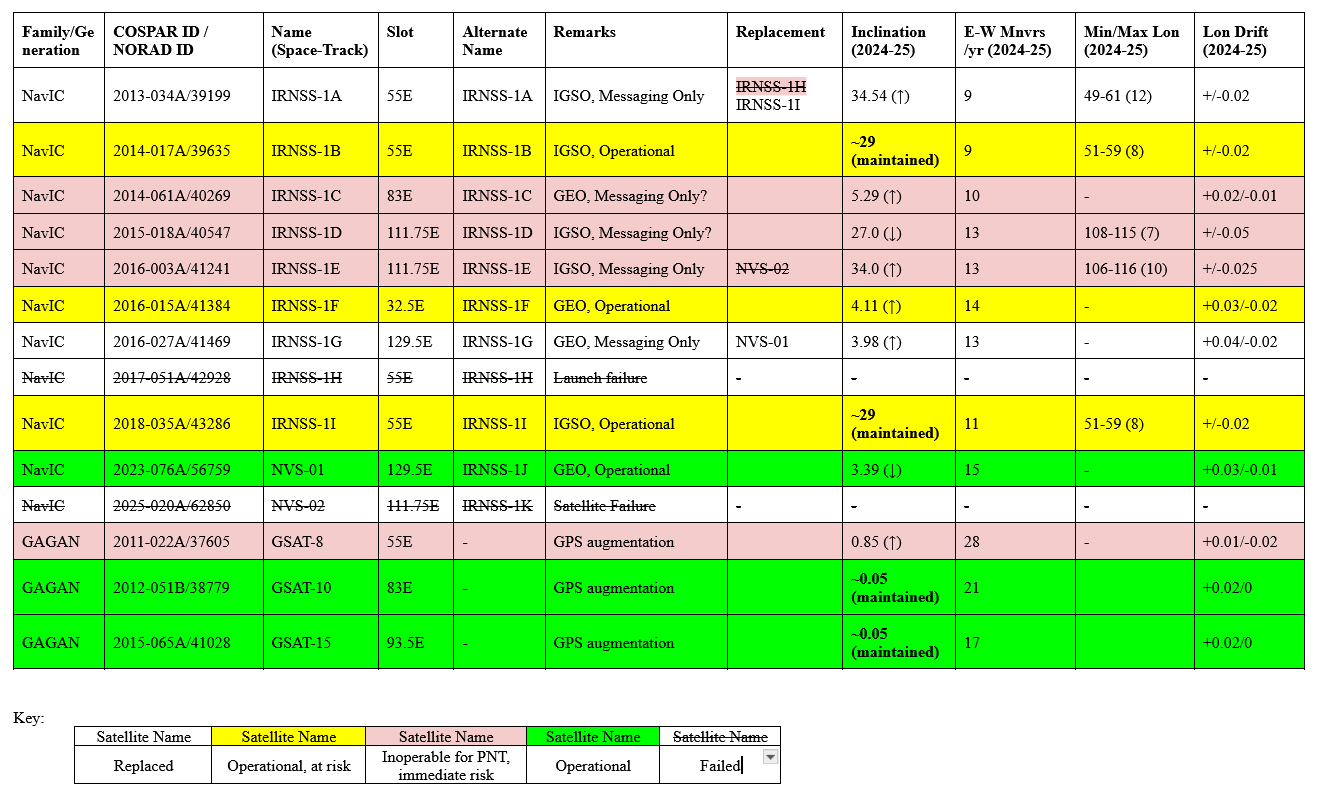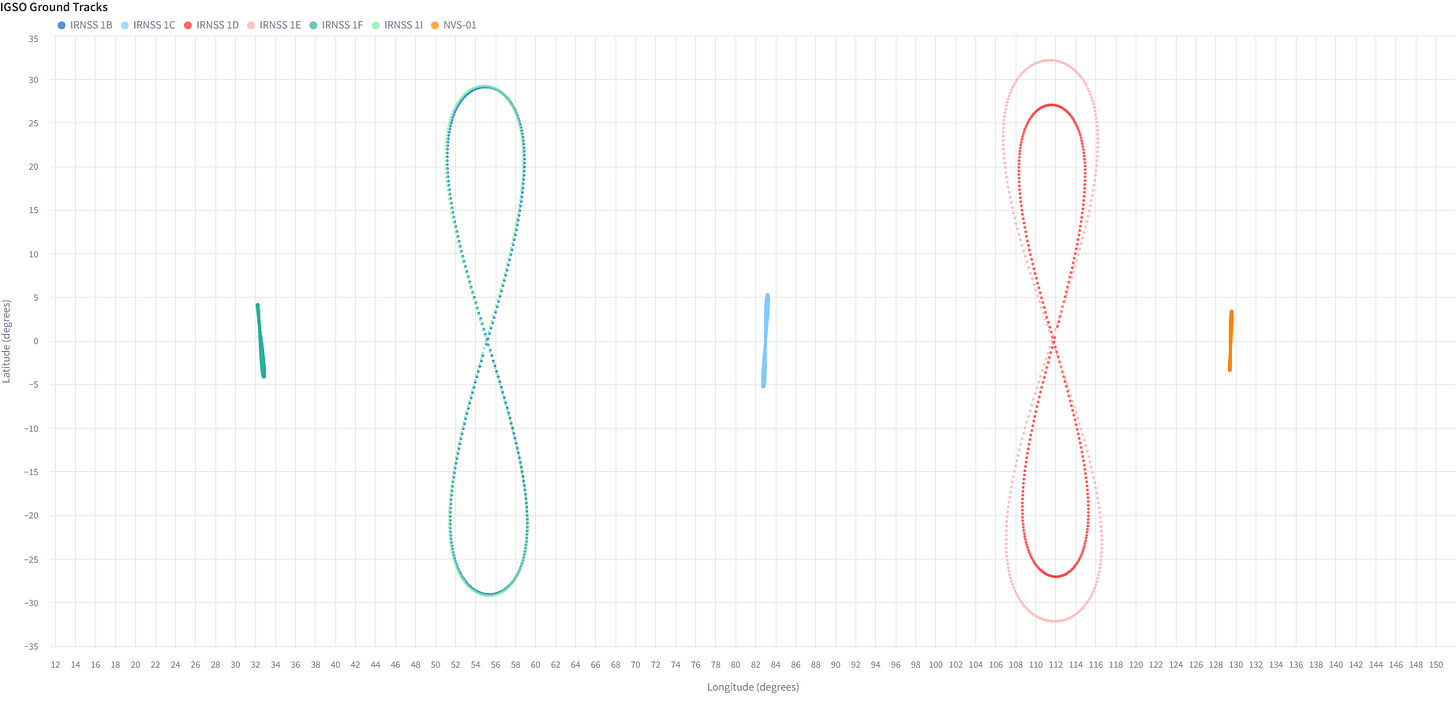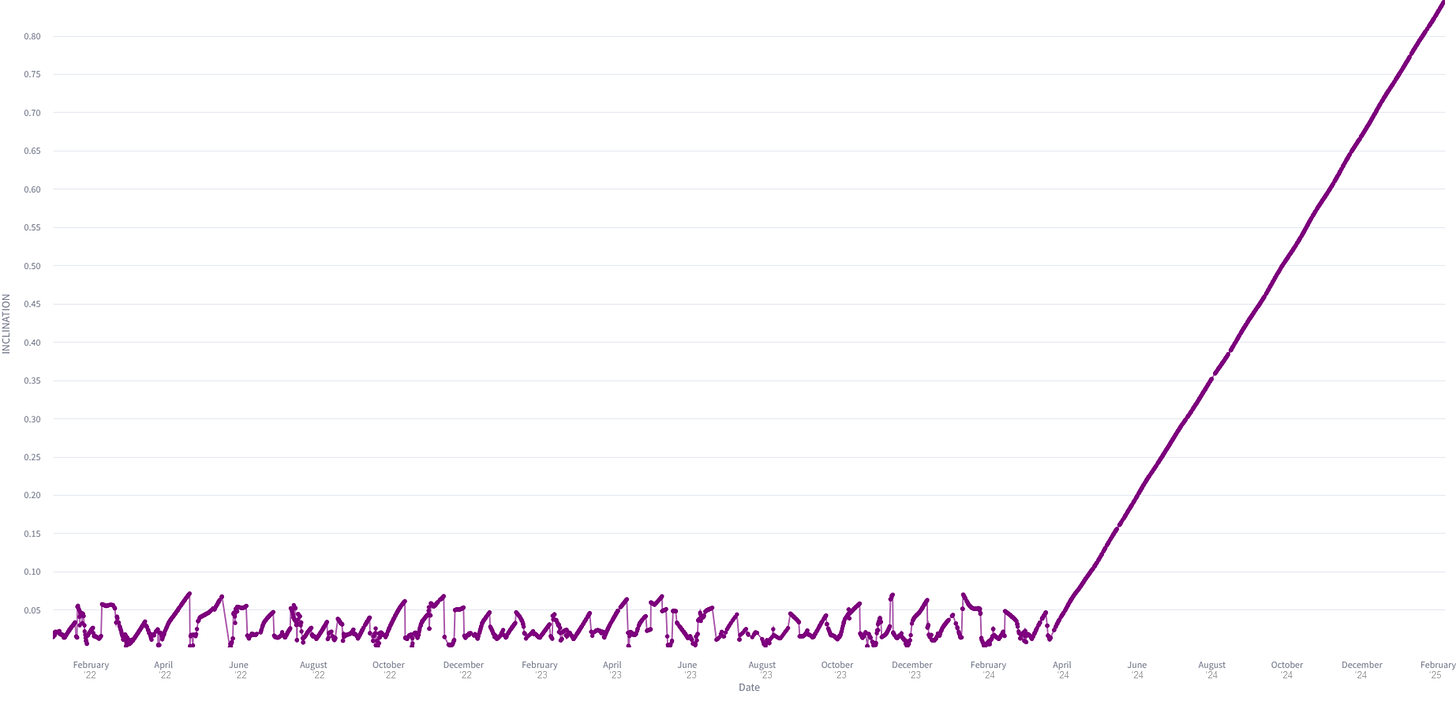Analyzing effects of ISRO's NVS-02 Navigation Satellite failure on NavIC users
A round-up of the impacts of NVS-02 with some context
With the stated mission objective of placing a next generation Position, Navigation and Timing (PNT) satellite, the NVS-02, into a slot that replaces the 9-year old IRNSS-1E, ISRO looked to have a pretty straightforward job ahead of them in the early hours of January 29th, 2025. This was the eve of ISRO’s 100th space launch, and despite how routine space launches have become, the stakes couldn’t be higher for the Indian Regional Navigation Satellite System (IRNSS), or as it is now called navigation with Indian Constellation (NavIC).

Some time between August 20, 2024 when ISRO released its 2023-24 Annual Report and October 26, 2024 - at the Sardar Patel Memorial Lecture given by the then ISRO Chief Dr. S. Somnath, the number of operational NavIC satellites reduced from five to four. The report states that “the NavIC base layer now consists of five satellites (IRNSS-1B, 1C, 1F, 1I and NVS-01) for operational service” while the slide shown by Dr. Somnath shows IRNSS-1C crossed-out, bringing the number of active PNT satellites available for sovereign Indian use down to four.
Current Area of Service
The base-layer of NavIC is supposed to be a 7-satellite constellation in Geostationary Earth Orbit (GEO) and Inclined Geo-Synchronous Orbit (IGSO). The coverage afforded by a fully functioning constellation extends across longitudes 25E to the West (Helsinki, Finland) through 142E to the East (eastern coast of Japan). To obtain the specified position, altitude and velocity accuracy for any area of operation, a minimum of 4 satellites need to be in view. With IRNSS-1C not transmitting a timing signal any more, users in the Western Theater cannot operate with the highest accuracy west of 68E (~70% area of service loss), owing to the easternmost satellite NVS-01 being the fourth satellite required to be in view. Operations in the Eastern Theater have to deal with greater PNT uncertainty east of 94E (~80% area of service loss), owing to the necessity to have the westernmost satellite IRNSS-1F in view and the added handicap of not receiving timing signals from IRNSS-1D and IRNSS-1E.
Constellation Health
An analysis of publicly available tracking data from space-track.org, coupled with updates from ISRO in the public domain regarding the operational functions of the constellation gives us a good foundation to understand what a successful orbital insertion of NVS-02 would have meant to its primary user: the Indian Military and all of its agencies.

The data points in the above table are compiled from two perspectives: (a) Today’s or most recent knowledge of the satellites’ orbits, and (b) A time-series of observations over the last 1-2 years of how the satellites have been faring in their respective orbital regimes. This allows us, with an understanding of the operational demands, to infer the health of and priorities placed on these valuable assets.
NVS-02 was slated to replace IRNSS-1E in the 111.75E IGSO slot. Assuming successful insertion and commissioning of NVS-02, it is reasonable to assert that NVS-03 may have been planned to be placed into the 83E GEO slot to bring full functionality to Eastern Theater operations (extending the easternmost longitude of service to 119E and bringing service loss down to 39% for these users). Likewise, NVS-04 may have originally been targeted for placement into the 111.75E IGSO slot to complement NVS-02 in latitudinal coverage from the same slot. Now through the loss of NVS-02, the next launch would mostly target the 111.75E IGSO slot as the Eastern Theater’s capabilities are severely limited and probably necessitate use of other global PNT systems to augment NavIC services.
Operational constraints of aging NavIC satellites

IRNSS-1E is starting to have wider E-W migration (~10deg) in tracing an analemna at 111.75E (see the pink trace centered at 111.75E in the figure above). With no N-S station-keeping, the satellite will continue to go out of the orbital inclination specification, which is currently 34deg and rising.
The propulsion system on IRNSS-1C (the central GEO trace in the above figure) is being managed carefully, limiting the number of E-W station-keeping maneuvers, while N-S station-keeping has been halted altogether.
IRNSS-1D has had a higher E-W drift rate for the last year (see the table above). Its inclination is veering off the 29deg specification (reducing below 27deg) without any possibility of a N-S correction.
IRNSS-1B seems to be the best maintained satellite in the constellation, nearing its 11th year in operation and currently being matched perfectly by the newer IRNSS-1I. This may not hold for long as the original life of the 1st generation NavIC satellites is not accounted to be more than 10 years. Tradeoffs may be in order ro reduce E-W station keeping frequency in exchange for maintaining the latitudinal coverage without missing N-S station-keeping maneuvers.
How is the GAGAN system going?
The GPS augmentation system (GAGAN) developed by ISRO primarily for aircraft navigation in the subcontinent required a space segment to achieve full operational service. And this today depends on three telecommunications satellites in GEO carrying the GAGAN payload - GSAT-8, GSAT-10 and GSAT-15. Despite the last of these satellites (GSAT-15) being launched in 2015, the first autonomous landing using GAGAN was done only in 2022. Large airports are yet to be mandated to transition fully to GAGAN.

Considering the necessity of these systems and how complementary it is to NavIC, the health of GSAT-8 - launched in 2011 is of concern. GSAT-8 is clearly ageing and is being allowed to make larger N-S excursions since March 2024, is approaching its 14th year in space.
Takeaways
The crucial takeaway here is that NVS-02’s failure has set the program back not just by one additional launch and a satellite, but also compounded the strain on operations of the existing satellites, majority of which are reaching the end of their stated lifespans. With a success tagged against the output target of 1 navigation satellite to be launched in the 2023-24 Output-Outcome Monitoring Framework (OOMF) document, a follow-up target of 1 more navigation satellite (NVS-02) was stated in the 2024-25 OOMF document. The target for the coming year, with no real numbers changing in the budget request, is 0 (zero) navigation satellites for launch.
Operationalizing space-based infrastructure for the armed forces while maintaining a modicum of separation from civilian-only system is hard. Decision-makers have to take a long and hard look at the handicaps being built into the planning process while trying to keep the defense user and civilian technology provider apart. This is a foundational piece of modern technology that is equipping the men, women and machines that protect our trade routes, border security and our interests in the region. While one could say that there are systemic issues in the way India funds innovation, the whole point of building a sovereign PNT system will be moot if it is not given the right leadership, care and nurture as with new missions for nuclear energy and quantum computing.
Update: This article by V. Jagannathan published on February 8, quotes ISRO chief Dr. V. Narayanan saying “We will be raising the orbit using the thrusters with the available propellant. The satellite's condition is healthy” - when asked about contingency plans to salvage the mission.
A good outcome here would be to attain an orbit with a higher perigee, thereby avoiding re-entry and complete loss of the satellite. In fact, a great outcome would be coaxing the satellite all the way to its target orbit just using its attitude control thrusters (like Intelsat 33e owing to a different propulsion issue), but that would severely reduce the usable life, at the expense of persistent coverage. The users would be in the loop for such decisions - one would hope.
Watch this space for more such analysis pieces covering both Indian and international technology affairs from a multi-domain lens.


